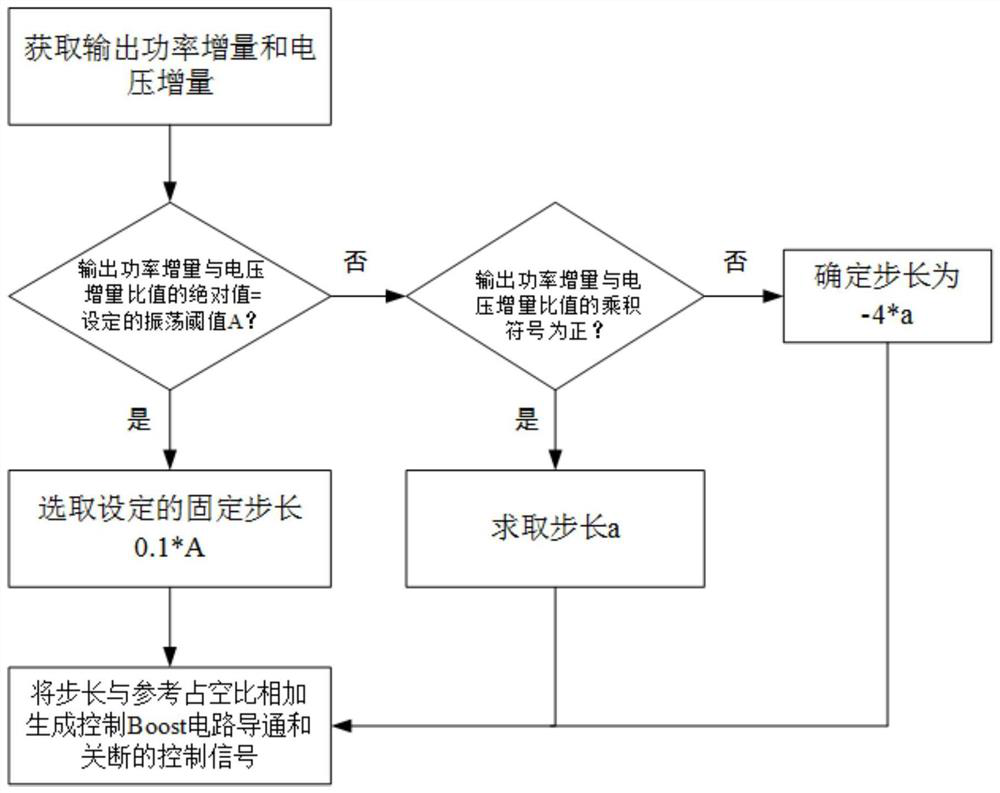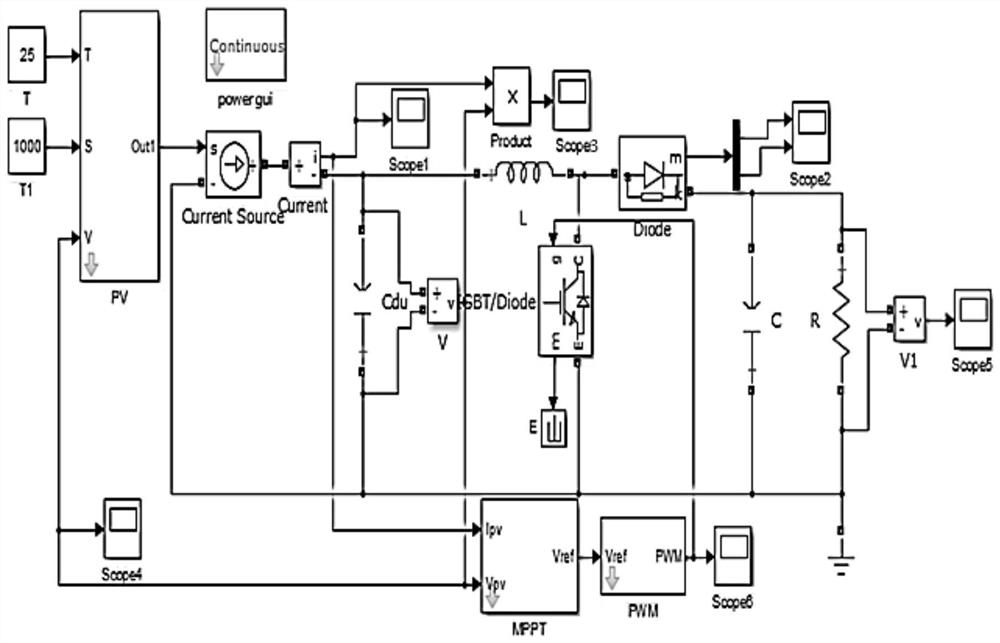Adaptive step-size photovoltaic maximum power tracking method and system based on conductance increment
A technology of maximum power tracking and self-adaptive step size, applied in photovoltaic power generation, regulating electrical variables, control/regulating systems, etc., it can solve problems such as high hardware requirements, lack of global optimization, tracking failure, etc., and achieve stable steady-state power. output, the effect of achieving steady-state power output and fast steady-state power output
- Summary
- Abstract
- Description
- Claims
- Application Information
AI Technical Summary
Problems solved by technology
Method used
Image
Examples
Embodiment
[0041] Such as figure 1 As shown, the adaptive step-size photovoltaic maximum power tracking method based on conductance increment includes the following steps:
[0042] Step 1: Collect the output current and output voltage of photovoltaic cells, and calculate the output power of photovoltaics in the current period and the previous period, the output power increment and voltage increment of photovoltaics in the current period and the previous period through the formula P=UI. If the voltage increment or the output power increment is zero, the step size is zero; if neither the output power increment nor the voltage increment is zero, then enter step 2.
[0043]Step 2: Set the oscillation threshold A to reduce the oscillation range of the photovoltaic output power under stable conditions. The oscillation threshold A set in this embodiment is 0.1. Select a fixed step size with a smaller value near the maximum power point to avoid jumping directly to the left side of the maximum p...
PUM
 Login to View More
Login to View More Abstract
Description
Claims
Application Information
 Login to View More
Login to View More - R&D
- Intellectual Property
- Life Sciences
- Materials
- Tech Scout
- Unparalleled Data Quality
- Higher Quality Content
- 60% Fewer Hallucinations
Browse by: Latest US Patents, China's latest patents, Technical Efficacy Thesaurus, Application Domain, Technology Topic, Popular Technical Reports.
© 2025 PatSnap. All rights reserved.Legal|Privacy policy|Modern Slavery Act Transparency Statement|Sitemap|About US| Contact US: help@patsnap.com



